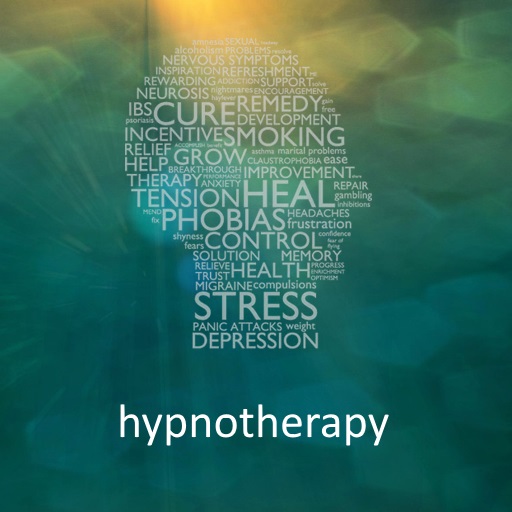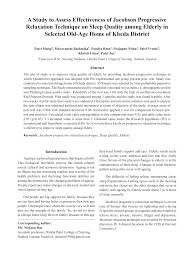
Sir James Braid, an 18th-century Scottish surgeon and natural philosopher, was born in 1775. He was a natural philosopher and gentleman scientist. His many books and scientific observations are now considered classics. His many discoveries are essential to the development of medicine and physiology. Anyone interested in the human body should read his works. These are some of his most important contributions in science and medicine. You can read the following to get a better understanding of his work:
The author of this article is an amateur physician who was a pioneering figure in the field. Sam Tremlett was the author of the article. He had been a medical student at the University of Edinburgh. Braid's articles were published by the journal. He has also been recognized for many other contributions to medicine. If you're an aspiring physician, check out these articles!

Braid's work was not published for many years after he died. However, letters published by The Medical Circular and other publications survived. In 1842, he reviewed mesmerism and the Satanic agency and addressed a sermon at St Jude's Church in Liverpool. His 'Letters to the Editor' was published on 28 January and 26 February 1860, but Waite's publication misidentifies the author as Garth Williamson. Braid referred to this state in a hysterical note as "monoideism".
Braid published in 1852 his first book concerning hypnosis. It described methods for curing various diseases, like animal magnetism. He published his book on Hypnosis in 1853. The Art of Hypnosis, James Braid's first book on the subject, is now known. While the practice of hypnosis is still a new field, there are many fascinating ways to explore it.
Braid believed that only medical professionals should use hypnotism. He wasn't the first person to practice Hypnosis, despite this strong belief. His theories about the power of suggestion led many advances in the field. Hypnosis continues to grow and Braidism, a technique that relaxes and fixes the eyes, is an example of this.

Aside from his research, Braid also had many published works on the subject. James Braid from Manchester, who was a surgeon, wrote the two most important. In 1865, he became a famous hypnotist and authored several books on the subject. Although his work was not widely known at the time, it is often credited with helping people navigate their lives.
James Braid was a well-known Scottish mesmerist. He was born and raised in Kinross. He studied medicine at the University of Edinburgh. After meeting a Manchester mesmerist, Lafontaine became interested mesmerism for the first time. Lafontaine was an accomplished theatrical artist who used mesmerization in order to make his subjects forget all about pain. This is still one his most loved works.
FAQ
What can I do to boost my immune system?
The human body consists of trillions of cells. Each cell is responsible for creating organs and tissues with specific functions. When one cell dies, another cell replaces it. Hormones, which are chemical signals that allow cells to communicate with one another, enable them to do so. Hormones regulate every bodily process, from growth and development to metabolism as well as immunity.
Hormones are chemicals secreted by glands throughout the body. They circulate through the blood stream and act as messengers to regulate how our bodies function. Some hormones are made internally, while others are created outside the body.
When a hormone-producing gland releases their contents into the bloodstream, hormone production begins. Once hormones are released they move through the bloodstream until they reach their intended organ. In some cases, hormones remain active only for a short period of time. Others hormones remain active longer and still have an influence on the body's functioning long after they leave bloodstream.
Some hormones can be produced in large amounts. Others are made in small quantities.
Some hormones are produced at certain times during life. Estrogen is one example. It's produced in puberty, pregnancy and menopause. Estrogen helps women develop breasts, maintain bone density, and prevent osteoporosis. It promotes hair growth as well as keeping skin soft and smooth.
What are 10 healthy behaviors?
-
Have breakfast every day.
-
Don't skip meals.
-
Be balanced.
-
Drink plenty of water
-
Take care to your body.
-
Get enough rest.
-
Avoid junk food.
-
Do some exercise every day.
-
Have fun
-
Make new friends.
Exercise: Good for immunity or not?
Exercise is good to your immune system. Your body creates white blood cells when you exercise that fight infection. Your body also eliminates toxins. Exercise is a great way to prevent heart disease, cancer, and other diseases. It can also lower stress levels.
Exercising too often can cause your immune system to be weaker. Your muscles can become sore if you exercise too much. This can cause inflammation and swelling. Your body will then produce more antibodies in order to fight infections. However, these antibodies can also cause allergic reactions and autoimmune diseases.
So, don't overdo it!
How does an antibiotic work?
Antibiotics kill harmful bacteria. Antibiotics are used to treat bacterial infections. There are many different types of antibiotics. Some can be taken orally while others are injected. Others are topically applied.
People who have been exposed may be prescribed antibiotics. An oral antibiotic might be prescribed to someone who has been exposed to chicken pox. This will prevent the spread of shingles. Penicillin might also be administered to someone with strep throat. This will help prevent the possibility of developing pneumonia.
A doctor should give antibiotics to children. Side effects of antibiotics can be more dangerous for children than for adults.
Diarrhea, the most common side-effect of antibiotics, is probably diarrhea. Other possible side effects include diarrhea, nausea and vomiting, allergy reactions, dizziness, dizziness, stomach cramps, nausea, vomiting or allergic reactions. Most of these symptoms disappear after the treatment is completed.
What is the difference between sugar and fat?
Fat can be a source of energy that is obtained from food. Sugar is a sweet substance that can be found naturally in fruits or vegetables. Both fats, as well sugars, provide the same number calories. But, fats have more calories than sugars.
Fats are stored in your body and can cause obesity. They can lead to cholesterol buildup in the arteries, which could cause heart attacks or strokes.
Sugars are quickly absorbed and provide instant energy. This causes blood glucose levels rise. High blood sugar levels can cause type II diabetes.
How much should my body weight be for my height? BMI calculator & chart
To determine how much weight loss you need, a BMI calculator is your best friend. The range of a healthy BMI is between 18.5- 24.9. If you want to lose weight, then you should aim to drop about 10 pounds per month. Enter your weight and height into the BMI calculator.
Check out this BMI chart to determine if you are overweight or obese.
Statistics
- nutrients.[17]X Research sourceWhole grains to try include: 100% whole wheat pasta and bread, brown rice, whole grain oats, farro, millet, quinoa, and barley. (wikihow.com)
- WHO recommends consuming less than 5% of total energy intake for additional health benefits. (who.int)
- This article received 11 testimonials and 86% of readers who voted found it helpful, earning it our reader-approved status. (wikihow.com)
- According to the Physical Activity Guidelines for Americans, we should strive for at least 150 minutes of moderate intensity activity each week (54Trusted Source Smoking, harmful use of drugs, and alcohol abuse can all seriously negatively affect your health. (healthline.com)
External Links
How To
What does the meaning of "vitamin?"
Vitamins are organic compounds that can be found in foods. Vitamins allow us to absorb nutrients from food. Vitamins cannot come from the body so food must provide them.
Two types of vitamins exist: water-soluble vitamin and fat-soluble vitamin. Water soluble vitamins dissolve easily in water. These include vitamin C (thiamine), Vitamin B1 (riboflavin), Vitamin B2 (riboflavin), Vitamin B3 (niacin), Vitamin B6 (pyridoxine), Vitamin C, B1 (thiamine), Vitamin B2 (riboflavin), Vitamin B3 (niacin), and Vitamin B6 (pyridoxine). The liver and fat soluble vitamins are stored within the liver and in fatty tissue. Some examples include vitamin D and E, K, A and beta carotene.
Vitamins can be classified by their biological activity. There are eight major types of vitamins:
-
A – Essential for normal growth, and the maintenance of good health.
-
C - essential for nerve function and energy generation.
-
D – Essential for healthy teeth, bones and joints
-
E is necessary for good vision, reproduction.
-
K - Essential for healthy muscles and nerves.
-
P – vital for building strong bones.
-
Q - Aids digestion and iron absorption
-
R - necessary for making red blood cells.
The recommended daily allowance (RDA), for vitamins, varies depending upon age, gender, or physical condition. The U.S. Food and Drug Administration (FDA) sets the RDA values.
For adults aged 19 and older, the RDA for vitamin B is 400 micrograms daily. For fetal development, pregnant women need 600 mg per day. Children ages 1-8 require 900 micrograms per day. For infants younger than one year, 700 micrograms are required daily. However, this number drops to 500 micrograms each day for children aged 9-12 months.
Children ages 1-18years who are obese need 800 micrograms per day while those who are overweight need 1000 micrograms per day and children who are underweight need 1200 micrograms per day to meet their nutritional needs.
Children ages 4-8 years who have been diagnosed with anemia need 2200 micrograms per day of vitamin C.
2000 micrograms per person is necessary for general health. Mothers who are pregnant, nursing, or have a high nutrient need will require 3000 micrograms a day.
Adults over 70 need 1500 micrograms daily, as they lose 10% of their muscle every ten years.
Women who have been pregnant or are lactating require more than the RDA. Pregnant mothers need 4000 micrograms per daily during pregnancy and 2500 after giving birth. Breastfeeding mothers need 5000 mg per day when breastmilk is being produced.